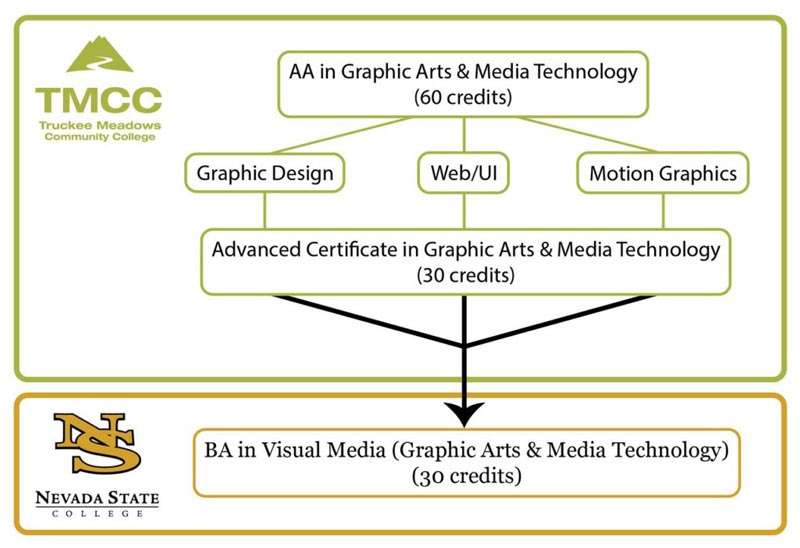
Program Information
The GAMT program offers classes that range from introductory to advanced, and are offered during day and evening timeframes. There are two levels of foundation (introductory) classes that all Graphic Arts and Media Technology majors must take before moving on to higher-level courses. GRC 100, GRC 116 and ART 101 are first level, and students with equivalent academic or work experience may skip these classes with department approval.
Second level foundation classes are GRC 117 and GRC 200, which focus on merging creative skills with the various software required in print, digital and motion media. All five foundation courses are offered during Fall and Spring Semesters, but enrolling early is highly recommended, GRC/VIS class fill quickly. Not all intermediate/advanced classes are offered every semester, please check the schedule of classes or contact the department for sequencing of courses.
While manual skills are important in Graphic Arts and Media Technology, most classes focus on electronic techniques using Apple computers and Adobe InDesign, Illustrator, Photoshop, Acrobat, Dreamweaver, Animate, Premiere, Audition, After Effects and Maya 3D software.
Degrees and Certificates
In a recent survey of industry representatives, 60% said that an associate degree related to Graphic Arts and Media Technology was the level of training they were looking for when hiring for entry-level positions. With this in mind, the program offers a full range of Certificates and Associates degrees, in addition to our new Advanced Certificate.
Bachelor of Arts Degree
A 4-year Bachelor of Arts degree in Visual Media with an emphasis in Graphic Arts and Media Technology can be obtained at TMCC, through a partnership with Nevada State College (NSC). This partnership allows students to complete the first three years in the GAMT program at TMCC and finish their fourth year with NSC while remaining on the TMCC campus. The first two years are the AA in Graphic Arts and Media Technology, the third year is the Advanced Certificate in Graphic Arts and Media Technology, and the final year is a BA in Visual Media with NSC. Students complete their final year on the TMCC campus, making the program a seamless path to a bachelor’s degree.
Competency-based Program
You, as a learner, are the most important part of instruction. In performance-based instruction, we carefully identify what you need to be able to do as a result of an instructional experience. Next, we determine how you can show that you have learned these skills. Finally, we plan learning activities that will help you develop the skills.
Performance-based Instruction Advantages
- What you will learn is based on the skills you will need rather than on outlines of information.
- You know the standards for evaluation before the performance test. You earn a grade according to how well you perform the skills rather than according to how well others in the class perform. You are not graded on a curve.
- You are actively involved in the learning. We design learning activities and assignments that teach you to solve problems and to learn on your own.
- When you complete a learning experience, you have documentation showing the skills you have learned. You can use this information when you seek employment, admission to further education, advanced standing or transfer of credit.
Program Assesment Outcomes
Over the course of the program students will:
- Identify and apply historical and current design theories and concepts in the production of visually engaging media that meets the requirements of the graphic communications industry.
- Acquire a broad skill set in current graphics related technologies, including computer software applications, processes and other production techniques used in the graphic communications industry.